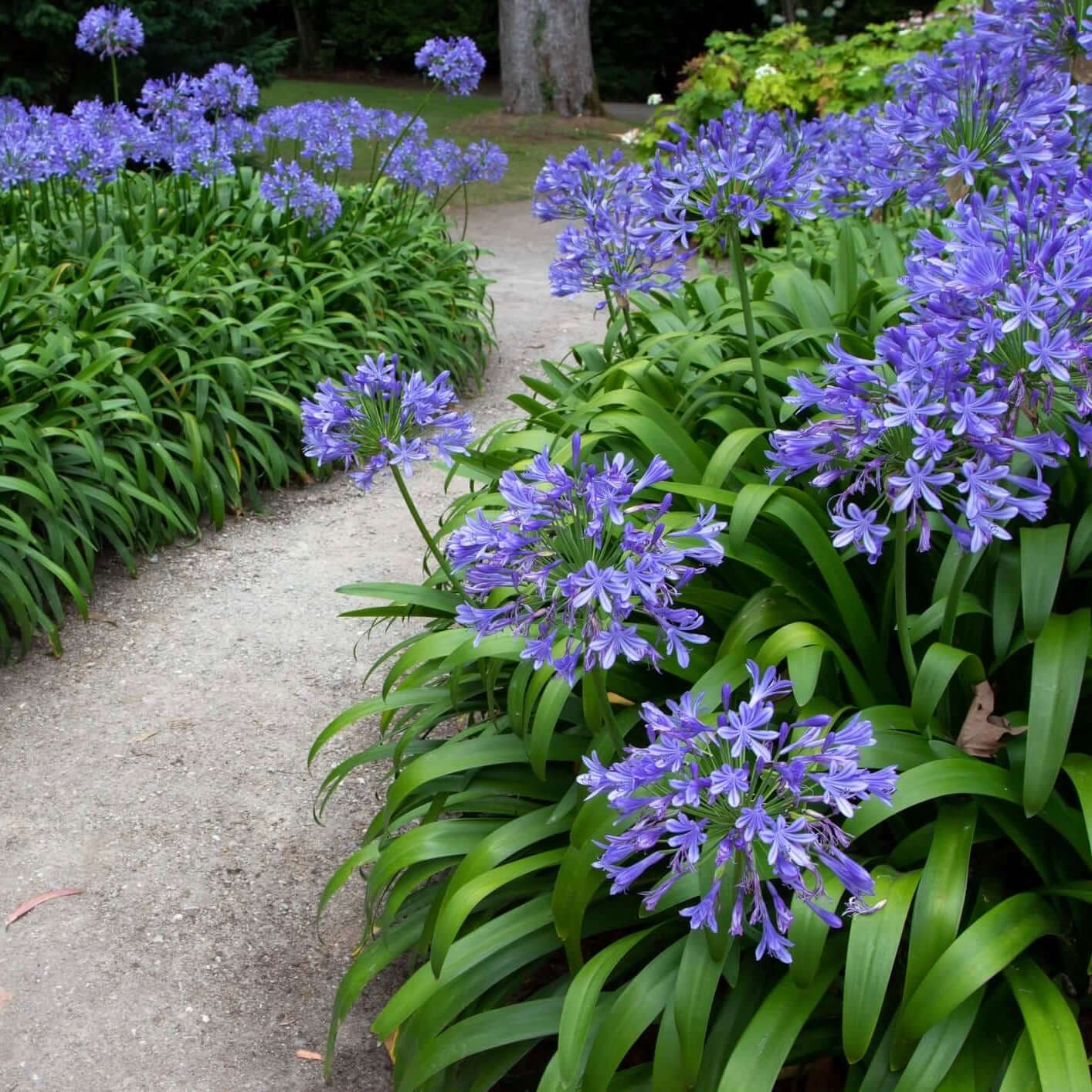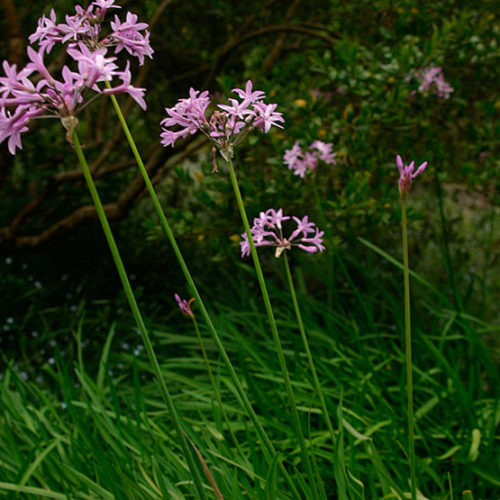Seasonal Agapanthus Care: Preparing for Winter and Summer season
Seasonal Agapanthus Care: Preparing for Winter and Summer season
Blog Article
Releasing the Secret to Effective Agapanthus Growing: Idea for a Flourishing Yard
In the realm of horticulture, cultivating agapanthus efficiently requires a strategic technique that incorporates various aspects of plant treatment. By comprehending the subtleties of agapanthus cultivation, one can develop a setting where these plants thrive and flower abundantly.
Growing Agapanthus: Finest Practices
When growing Agapanthus, proper dirt preparation is vital for guaranteeing successful development and advancement of these gorgeous blossoms. Agapanthus, typically referred to as Lily of the Nile or African lily, prospers in well-draining soil with a somewhat acidic to neutral pH level - Agapanthus. Prior to planting, it is vital to amend heavy clay dirts with organic issue such as compost or peat moss to boost drainage and give important nutrients for the plants
To plant Agapanthus, select an area that obtains complete sunlight to partial color, as this will promote healthy growth and abundant flowering. Dig a hole twice the diameter of the plant's root round and position the Agapanthus at the same depth it was formerly expanding. Delicately backfill the opening with dirt, weighing down securely to get rid of any air pockets around the origins.
Water the recently planted Agapanthus thoroughly and continue to maintain the dirt evenly damp, particularly during the plant's active growing season. Agapanthus. Using a well balanced plant food once a month can better sustain the plant's development and blooming. By complying with these ideal practices for planting Agapanthus, you can develop a spectacular display of these captivating blossoms in your garden
Perfect Dirt Issues for Agapanthus
For optimum growth and flowering success of Agapanthus plants, making sure the soil problems are ideal is essential. Agapanthus prefers dirt that is rich in nutrients, so including a well balanced fertilizer throughout the expanding period can promote healthy and balanced growth and lively flowers.

Watering and Fertilizing Tips
To guarantee healthy and balanced development and vivid flowers, appropriate watering and fertilizing techniques are vital for effective Agapanthus farming. Agapanthus plants gain from routine watering, particularly during the growing season. It is recommended to water deeply as soon as a week, ensuring the soil is damp however not soaked. During hot weather or in pots, more frequent watering might be needed to avoid the soil from drying out completely.
When it comes to fertilizing Agapanthus, a well balanced fertilizer with equivalent parts nitrogen, phosphorus, and potassium can be applied in the springtime to promote healthy development and blooming. Slow-release plant foods are suitable for supplying nutrients gradually over an extensive duration. Prevent over-fertilizing, as this can result in excessive foliage development at the cost of blooms.
In addition, including raw material like garden compost right into the soil can boost nutrient levels and improve soil framework, aiding in the total health and wellness of the Agapanthus plants. By adhering to these watering and fertilizing tips, garden enthusiasts can ensure their Agapanthus plants grow and create stunning displays of flowers.
Pruning and Deadheading Strategies
Appropriate trimming and deadheading methods play a critical function in keeping the health and wellness and visual appeals of Agapanthus plants, enhancing the necessary practices of watering and fertilizing for effective growing. Trimming Agapanthus involves getting rid of spent flower heads, dead or yellowing leaves, and total shaping of the plant to promote much better development. Deadheading, the process of eliminating discolored flowers, not only improves the plant's look but likewise encourages additional flowering.
When deadheading Agapanthus, it is suggested to snip off the flower stem at the base making use of sharp, clean shears. This process redirects the plant's power from seed manufacturing back right into root and foliage development, promoting a healthier and more robust plant. Regular deadheading can prolong the flowering duration of Agapanthus and protect against self-seeding, which can result in overcrowding.
In terms of pruning, Agapanthus typically take advantage of a light trim after blossoming to clean the plant and motivate fresh development. Reducing the invested blossom stems and getting rid of any broken or dead vegetation assists preserve the plant's vigor and general appearance. Nevertheless, it is important to stay clear of cutting into the crown of the plant, as this can weaken its health and wellness.

Protecting Agapanthus From Vermins and Diseases
Applying efficient pest and illness monitoring strategies is critical to protecting the resource wellness and vitality of Agapanthus plants in farming. One usual pest that impacts Agapanthus is the Agapanthus borer, a caterpillar that passages into the plant, creating damage to the leaves and blossoms.
Along with insects, Agapanthus are prone to diseases such as root rot and fungal fallen leave places. These concerns can frequently be stopped by ensuring appropriate water drainage and staying clear of overwatering. If signs of illness show up, influenced parts of the plant need to be immediately removed to avoid additional spread. Fungicides may likewise be utilized as a therapy action, adhering to the maker's guidelines meticulously. By remaining cautious and addressing insect and illness problems immediately, garden enthusiasts can aid their Agapanthus flourish and prosper.

Conclusion
In final thought, successful growing of agapanthus requires correct planting strategies, suitable soil conditions, sufficient watering and feeding, regular pruning and deadheading, and protection from illness and parasites. By complying with these pointers and tricks, garden enthusiasts can ensure a prospering garden loaded with stunning agapanthus blossoms. Agapanthus. Keep in mind to maintain constant treatment and focus to information to promote the wellness and longevity of these sensational plants
When planting Agapanthus, appropriate soil have a peek at this website prep work is crucial for ensuring successful growth and advancement of these lovely blossoms.Water the freshly grown Agapanthus thoroughly and continue to additional resources keep the soil uniformly damp, especially during the plant's active growing period.For ideal growth and growing success of Agapanthus plants, making certain the dirt problems are perfect is important. When transplanting or planting Agapanthus, make certain the dirt is well-prepared to give the essential structure for the plants to establish themselves effectively. One usual pest that affects Agapanthus is the Agapanthus borer, a caterpillar that tunnels right into the plant, causing damages to the fallen leaves and flowers.
Report this page